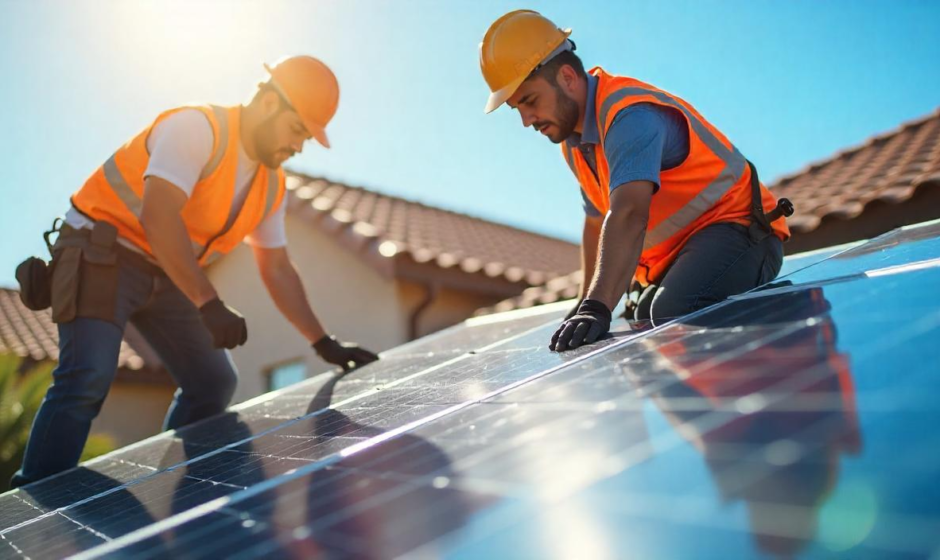1. Introduction
Solar energy systems have become a mainstreamway for homeowners to lower energy bills and reduce their carbon footprint. However, it isn’t “install and forget.” Over time, solar panels and their components can develop Solar problems that impair performance. Recognizing these issues early—and knowing how to address them—can save you thousands of rupees in lost production and repair costs. In this guide, we’ll walk through the ten most frequent solar panel problems and outline clear steps to diagnose and fix each one.
2. Problem #1: Reduced Power Output
Symptoms: Your system generates less energy than expected, even on sunny days.
Causes: Dirt, dust, pollen, bird droppings, or leaves covering the panel surface; micro-cracks in cells; degradation over time.
Solutions:
-
Cleaning: Gently wash panels with soft water and a squeegee or soft brush every six months. Avoid abrasive cleaners.
-
Inspection: Visually inspect for cracks or discoloration. If you spot damage, call your installer to assess warranty coverage.
-
Performance Monitoring: Compare daily kWh output to historical averages; significant deviations may indicate a deeper issue.
3. Problem #2: Hot Spots
Symptoms: Localized dark patches or blistering on the backsheet, sometimes visible as black or brown spots.
Causes: Shading from debris or partial cell failure creates uneven heating, which damages cells over time.
Solutions:
-
Shade Removal: Trim nearby trees or relocate objects casting shadows.
-
Thermal Inspection: Have a professional use infrared imaging to pinpoint hot spots.
-
Panel Replacement: If hot spots are severe, individual panels may need replacement under warranty.
4. Problem #3: Inverter Faults
Symptoms: Error codes displayed on the inverter, no digital output readings, or system shutting down unexpectedly.
Causes: Overvoltage, undervoltage, overheating, grounding issues, or firmware bugs.
Solutions:
-
Error Code Lookup: Consult your inverter’s manual to interpret fault codes.
-
Restart/Reset: Power-cycle the inverter by switching it off for 5–10 minutes then back on.
-
Professional Service: If errors persist, contact a certified technician to test voltage levels, update firmware, or replace faulty components.
5. Problem #4: Shading and Orientation Issues
Symptoms: Certain panels or strings underperforming while others are fine.
Causes: New obstructions (e.g., growing trees, construction), or panels not optimally oriented.
Solutions:
-
Site Assessment: Use a solar panel failures pathfinder or smartphone app to map shade patterns throughout the year.
-
Tree Trimming: Schedule regular trimming of foliage encroaching into the sun’s path.
-
Panel Repositioning: In some cases, relocating affected panels or installing microinverters/optimizers can mitigate shading losses.
6. Problem #5: Wiring and Connection Failures
Symptoms: Sudden drops in production on one string; visible burn marks on junction boxes or conduits.
Causes: Loose connectors, faulty MC4 connectors, corrosion, rodent damage.
Solutions:
-
Visual Inspection: Look for frayed wires, corroded terminals, or chewed insulation.
-
Tightening Connections: With the system shut down, tighten any loose MC4 or terminal connections.
-
Protective Conduits: Install rodent-proof conduits and weatherproof junction boxes.
7. Problem #6: PID (Potential Induced Degradation)
Symptoms: Gradual performance drop not explained by dirt or shading—often affects panels at system ends.
Causes: Voltage differentials between cells and grounded frames cause leakage currents, degrading cells.
Solutions:
-
PID Test: Engage a professional to perform a PID test under high-voltage conditions.
-
Mitigation Devices: Install PID recovery devices or anti-PID modules.
-
Panel Replacement: Modern panels often come PID-resistant; consider replacement if under warranty.
8. Problem #7: Water Ingress and Moisture Damage
Symptoms: Delamination, corrosion beneath the glass, fogging, or bubbling.
Causes: Poor sealing, cracked frames, damaged backsheet allows moisture penetration.
Solutions:
-
Seal Inspection: Check panel edges and junction boxes for gaps or degraded sealant.
-
Re-Sealing: Use UV-resistant silicone or polymer sealant to re-seal vulnerable areas.
-
Panel Swap: For severe moisture damage, replacement under warranty is usually necessary.
9. Problem #8: Faulty Racking and Mounting Issues
Symptoms: Loose panels, rattling noise in wind, visible misalignment.
Causes: Improper installation torque, thermal expansion/contraction, corrosion of mounting hardware.
Solutions:
-
Torque Check: Tighten mounting bolts to manufacturer-specified torque values.
-
Corrosion Treatment: Replace rusted clamps or rails with stainless steel hardware.
-
Wind Deflectors: Install wind deflectors or edge seals to reduce uplift forces.
10. Problem #9: AC Side Failures (Disconnects, Breakers, Fuses)
Symptoms: Inverter alarms for open circuits, tripped breakers, or blown fuses.
Causes: Overcurrent, short circuits, degraded breakers, lightning surges.
Solutions:
-
Electrical Inspection: Have an electrician test breakers and fuses; replace aged or oversized breakers.
-
Surge Protection: Install surge protection devices (SPDs) on AC and DC sides to safeguard against lightning or utility surges.
-
Proper Sizing: Ensure breakers and wiring are correctly sized per IEC/NEC standards.
11. Problem #10: Monitoring System Glitches
Symptoms: Missing data, incorrect readings, or dashboard not updating.
Causes: Wi-Fi connectivity issues, firmware bugs, sensor failures.
Solutions:
-
Network Check: Verify your gateway/router connection; reboot if necessary.
-
Firmware Update: Download and install the latest firmware from your monitoring provider.
-
Sensor Calibration: Replace or recalibrate irradiance and temperature sensors as recommended.
12. Preventive Maintenance Tips
-
Regular Cleaning: Every 6–12 months, depending on local dust and pollen levels.
-
Visual Inspections: Quarterly checks for physical damage, shading, or debris buildup.
-
Performance Monitoring: Monthly review of output data to spot trends or anomalies.
-
Professional Service: Annual service by a qualified technician to test electrical integrity, torque, and system grounding.
13. When to Call a Professional
While simple tasks—like cleaning or tightening loose connectors—can be DIY, always engage certified installers or electricians when you encounter:
-
Electrical faults or arc faults
-
Inverter error codes you can’t clear
-
Hot spots detected via infrared thermography
-
Major structural or framing damage
Conclusion
Solar panels deliver reliable, renewable energy for decades—but only if maintained correctly. By understanding and addressing these top 10 common problems—ranging from dirt buildup and shading to inverter faults and PID—you’ll maximize system performance and protect your investment. Combine regular preventive maintenance with timely professional intervention, and your solar array will continue powering your home efficiently for years to come.
Read more:- https://fastpanda.in/2025/06/09/how-to-choose-the-best-home-warranty-expert-a-complete-guide/



